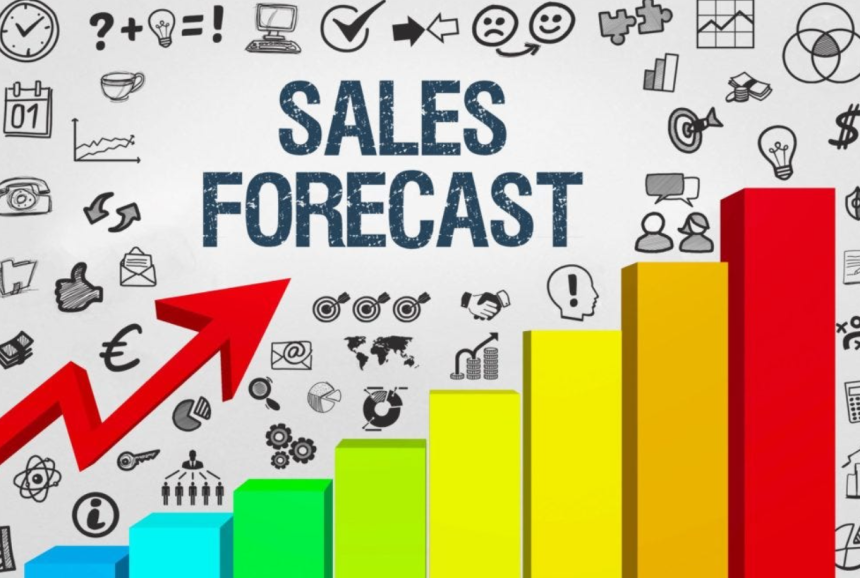What is Demand Forecasting?
At its core, demand forecasting is the systematic process of estimating the future demand for a product or service. In the dynamic landscape of retail, where consumer behavior is subject to change and external factors are in constant flux, demand forecasting serves as a strategic tool for businesses to anticipate and plan for the products customers will likely purchase.
Role in Predicting Customer Demand
Demand forecasting plays a pivotal role in predicting the ebb and flow of customer demand. By analyzing historical data, market trends, and various influencing factors, retailers can project the quantity and types of products that consumers are expected to purchase in the future. This anticipation empowers businesses to align their production, procurement, and marketing strategies to meet the expected demand, ultimately optimizing operations. These methods can be broadly categorized into qualitative and quantitative approaches.
Qualitative Approaches
- Market Research: Gathering insights through surveys, focus groups, and interviews to understand consumer preferences and expectations.
- Expert Opinions: Seeking input from industry experts, stakeholders, and internal teams to gather qualitative insights into market dynamics.
- Delphi Method: Utilizing a structured communication process among a panel of experts to reach a consensus on future demand scenarios.
Quantitative Approaches
- Time Series Analysis: Examining historical data to identify patterns and trends, enabling the projection of future demand based on past performance.
- Causal Models: Identifying and analyzing cause-and-effect relationships between demand and various influencing factors such as pricing, promotions, or external events.
- Machine Learning Algorithms: Leveraging advanced analytics and algorithms to process vast datasets and extract patterns, providing more accurate and real-time demand predictions.
Importance of Demand Forecasting in Retail
In the intricate dance of supply and demand within the retail industry, the role of demand forecasting is nothing short of instrumental. One of its primary virtues lies in the optimization of inventory levels – a task that requires both precision and foresight.
- Strategic Inventory Optimization: Align stock levels with anticipated sales for operational efficiency and improved profitability.
- Mitigating Stockouts and Overstock: Prevent financial strain by avoiding excess inventory and ensuring products are available when needed.
- Enhanced Supply Chain Efficiency: Streamline operations and minimize delays by proactively engaging suppliers based on accurate demand forecasting.
- Reduced Carrying Costs: Mitigate warehousing expenses and improve financial sustainability through effective resource allocation.
Benefits of Effective Demand Forecasting
Effective demand forecasting is not just a business process; it’s a strategic advantage that can transform the way retailers operate. By implementing robust forecasting practices, retailers unlock a multitude of benefits that go beyond predicting sales numbers.
Improved Customer Satisfaction
Accurate demand forecasts enable retailers to meet customer expectations consistently. Having the right products in stock when customers want them enhances the overall shopping experience, fostering satisfaction and loyalty.
Reduced Stockouts
Demand forecasting acts as a shield against stockouts, a situation that can be detrimental to both customer satisfaction and revenue. By anticipating demand accurately, retailers can maintain optimal inventory levels, reducing instances of products being unavailable.
Enhanced Overall Operational Efficiency
Efficient operations are the backbone of any successful retail business. Demand forecasting optimizes various operational aspects:
- Inventory Management: Prevents overstock and stockouts, reducing carrying costs and ensuring capital is allocated efficiently.
- Supply Chain Coordination: Streamlines the supply chain by providing suppliers with accurate demand projections, minimizing delays and disruptions.
- Procurement: Facilitates proactive procurement strategies, ensuring timely availability of raw materials and finished products.
- Resource Allocation: Enables effective allocation of resources, both human and financial, based on anticipated demand.
Strategic Pricing Decisions
Accurate demand forecasts empower retailers to make informed pricing decisions. Whether adjusting prices dynamically based on demand fluctuations or planning promotions strategically, pricing becomes a powerful tool for maximizing revenue.
Efficient Marketing Strategies
Marketing efforts can be tailored to align with forecasted demand. Retailers can plan promotions, advertisements, and product launches with precision, ensuring that marketing resources are allocated effectively.
Minimized Overhead Costs
Unnecessary overhead costs associated with carrying excess inventory are significantly reduced. Retailers can optimize storage space, reduce insurance costs, and avoid losses due to obsolescence.
Adaptability to Market Trends
Demand forecasting allows retailers to adapt swiftly to changing market trends. By understanding what products are likely to be in demand, retailers can stay ahead of the curve and capitalize on emerging trends.
Sustainable Growth
The benefits of effective demand forecasting contribute to the sustainable growth of the retail business. By preventing the financial strain associated with stock outs or excess inventory, retailers can reinvest resources strategically for long-term success.
Methods of Demand Forecasting in Retail
Demand forecasting is a nuanced practice that employs various methodologies, each catering to specific aspects of the retail landscape. Let’s delve into the diverse methods that retailers leverage to predict future demand.
1. Historical Sales Data Analysis:
- Method: This approach involves analyzing past sales data to identify patterns, trends, and seasonality. Time series analysis is a common technique within this method.
- Pros: Reliable for products with stable demand patterns. Provides insights into historical sales performance.
- Cons: May not capture sudden shifts in demand. Less effective for new or seasonal products.
2. Market Research:
- Method: Gathering insights through surveys, interviews, and focus groups to understand consumer preferences, expectations, and future buying intentions.
- Pros: Offers qualitative insights, especially for new products or markets. Allows for direct customer input.
- Cons: Subject to biases, may not accurately predict actual purchase behavior. Time-consuming and resource-intensive.
3. Advanced Statistical Models:
- Method: Utilizing advanced statistical models, including machine learning algorithms and predictive analytics, to analyze large datasets and identify patterns.
- Pros: Highly accurate and adaptable to complex data. Can capture non-linear relationships and dynamic market conditions.
- Cons: Requires expertise in data science. Data quality is crucial for accuracy. Resource-intensive in terms of computational power.
4. Causal Models:
- Method: Examining cause-and-effect relationships between demand and various influencing factors such as pricing, promotions, or external events.
- Pros: Allows for a deeper understanding of how external factors impact demand. Can be effective for specific product categories.
- Cons: Complexity increases with the number of influencing factors. Assumptions about causality may not always hold true.
5. Qualitative Approaches:
- Method: Incorporating expert opinions, market insights, and subjective judgments to forecast demand.
- Pros: Useful for new products or in the absence of historical data. Provides a holistic view of market dynamics.
- Cons: Subjective nature introduces potential biases. Relies on the expertise and judgment of individuals.
Challenges in Demand Forecasting
Demand forecasting, while a critical aspect of retail strategy, is not without its share of challenges. Retailers often grapple with a multitude of factors that can impact the accuracy of their predictions, both from external and internal perspectives.
1. External Factors
Seasonality:
- Challenge: Products often experience fluctuations in demand based on seasons, holidays, or weather conditions.
- Mitigation: Incorporate seasonality trends into forecasting models. Historical data analysis can reveal patterns.
Economic Changes:
- Challenge: Economic shifts, such as recessions or economic booms, can alter consumer spending patterns.
- Mitigation: Monitor economic indicators and adjust forecasting models accordingly. Implement scenario planning for economic uncertainties.
Market Trends:
- Challenge: Rapid changes in market trends can make it challenging to predict emerging consumer preferences.
- Mitigation: Stay informed through continuous market research. Leverage agile forecasting methodologies that can adapt to dynamic trends.
2. Internal Factors
Data Accuracy:
- Challenge: Inaccurate or incomplete historical data can lead to faulty predictions.
- Mitigation: Invest in data quality assurance processes. Regularly audit and clean historical data. Leverage data validation techniques.
Technology Limitations:
- Challenge: Outdated or insufficient technology may hinder the implementation of advanced forecasting models.
- Mitigation: Invest in modern forecasting tools and technologies. Embrace cloud-based solutions for scalability and real-time data processing.
Changing Product Assortment:
- Challenge: Introducing new products or discontinuing existing ones can disrupt forecasting models.
- Mitigation: Incorporate product lifecycle considerations into forecasting. Use qualitative approaches for new products and consider phased-out data for discontinued items.
Technology and Tools for Demand Forecasting
In the ever-evolving landscape of retail, leveraging advanced technologies is imperative for staying ahead in the competitive market. Demand forecasting has witnessed a transformation with the advent of sophisticated tools and technologies designed to enhance accuracy and efficiency.
1. Forecasting Software
Overview: Dedicated forecasting software streamlines the process by automating data analysis and providing intuitive interfaces for generating forecasts.
Benefits: Offers user-friendly interfaces, customizable settings, and integration capabilities with other business systems.
2. Enterprise Resource Planning (ERP) Systems
Overview: ERP systems integrate various business processes, including demand forecasting, into a centralized platform.
Benefits: Ensures real-time data synchronization across departments, fostering a holistic approach to demand forecasting.
3. Cloud-Based Solutions
Overview: Cloud-based solutions provide scalability, accessibility, and collaborative capabilities for demand forecasting teams.
Benefits: Facilitates real-time collaboration, allows for easy scalability based on data volume, and eliminates the need for extensive on-premise infrastructure.
4. Advanced Analytics Platforms
Overview: Platforms equipped with advanced analytics capabilities, including predictive analytics, machine learning, and artificial intelligence.
Benefits: Enables the analysis of large datasets, identifies patterns, and predicts future demand with a higher degree of accuracy.
5. Machine Learning (ML) and Artificial Intelligence (AI)
Overview: ML and AI algorithms process vast datasets, learning from patterns and making predictions without explicit programming.
Benefits: Enhances accuracy by adapting to changing patterns and considering a multitude of influencing factors. Ideal for dynamic and complex demand scenarios.
6. Predictive Analytics
Overview: Predictive analytics leverages historical data and statistical algorithms to forecast future demand trends.
Benefits: Provides insights into potential future outcomes, allowing retailers to make informed decisions and adjustments to their strategies.
7. Big Data Analytics
Overview: Big data analytics handles large and diverse datasets, extracting valuable insights for forecasting purposes.
Benefits: Processes extensive datasets quickly, enabling retailers to incorporate a wide range of data sources for more comprehensive predictions.
Conclusion
In conclusion, demand forecasting is pivotal in retail strategy, offering a competitive edge. Through effective methods and technology integration, retailers optimize operations, enhance customer satisfaction, and navigate challenges. Embracing continuous adaptation, retailers position themselves for sustained growth in the ever-changing market.















